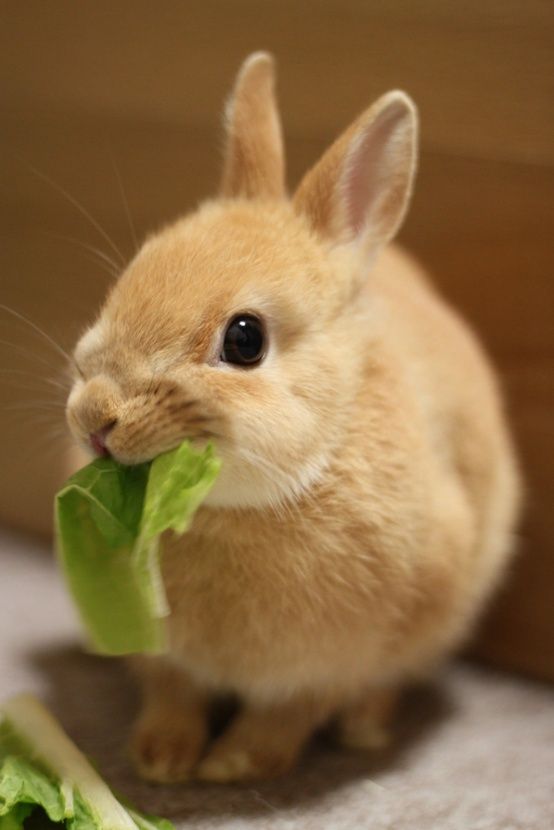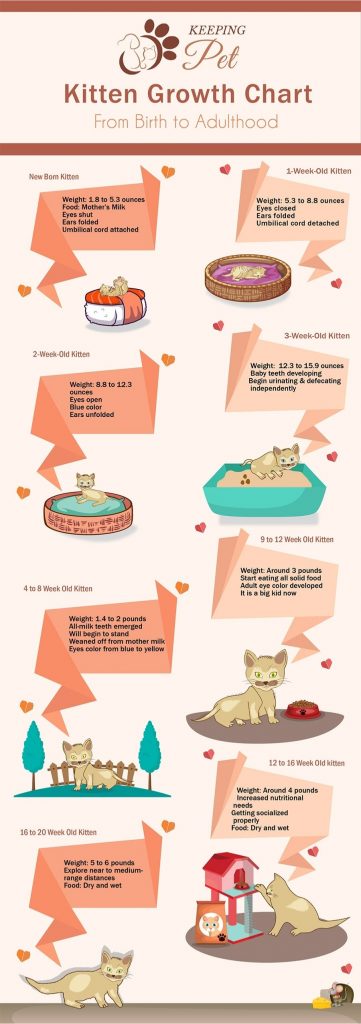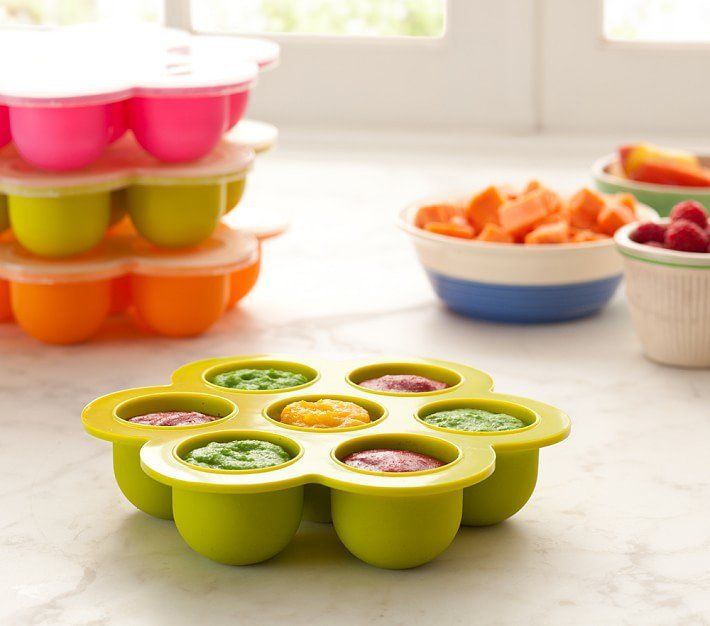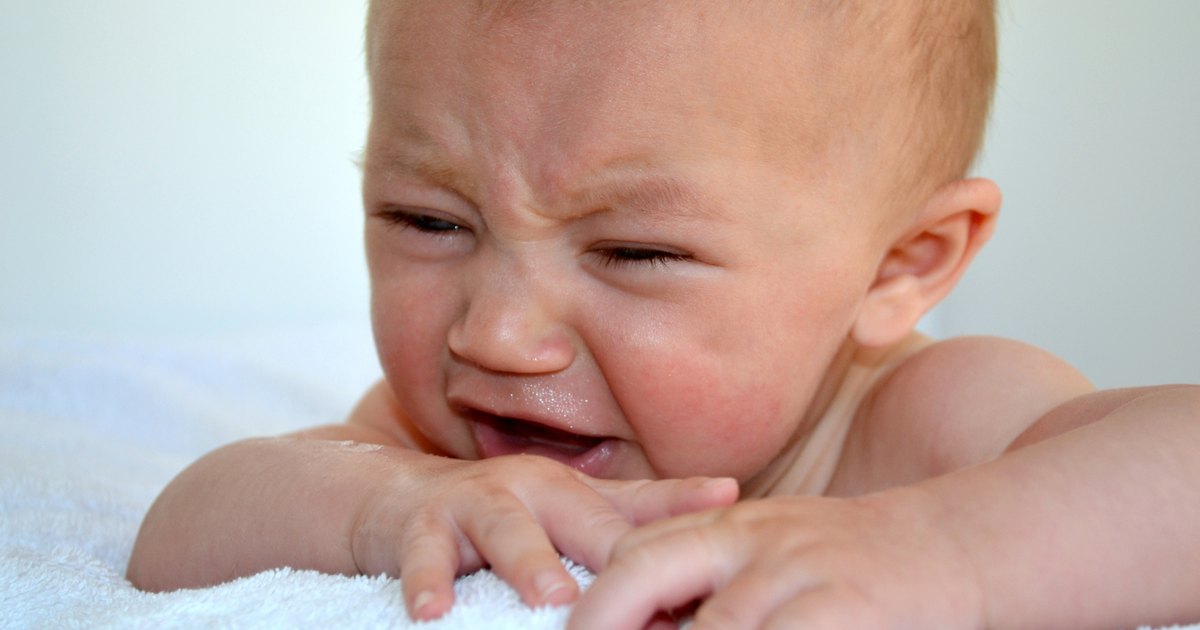Feeding my bearded dragon baby food
Can Bearded Dragons Have Baby Food?
It is not recommended that bearded dragons eat baby food. Some owners use baby food as a treat or to coax their lizards into eating vegetables or greens. This isn’t a recommended practice since baby food is often high in sugar and may have other additives that can harm your bearded dragon.
In this guide, you’ll learn:
- Is baby food harmful to bearded dragons?
- Why is it not recommended to feed baby food to bearded dragons?
- What can I feed my bearded dragon?
In addition, baby food is not part of the natural diet of a bearded dragon. Your bearded dragon should get a well balanced and varied diet of live insects and vegetables or greens with fresh fruits or mealworms as an alternative treat instead
What's In This Guide?
Can Bearded Dragons Eat Human Baby Food?Yes, bearded dragons can eat human baby food and are often reported to enjoy these as a nice treat by some owners. However, it’s not a good practice since baby food tends to be high in sugar and may have all sorts of additives and preservatives that can be harmful to bearded dragons. You should consult your veterinarian if you’d really like to incorporate baby food into your bearded dragon’s diet as a treat.
Sometimes, baby food is a convenient option to provide a high caloric slurry in case your bearded dragon needs to be syringe fed if it is sick or lethargic and refusing food.
Can Baby Food Be The Main Source Of Nutrition For My Beardie?No. Baby food will not give your bearded dragon the correct nutritional profile that it needs. It also tends to be high in sugar which is bad for your bearded dragon.
Though it may seem like a convenient way to work some fruits and vegetables into your bearded dragon’s diet, it will benefit more from whole, natural, leafy greens and other vegetables which will provide the full range of nutritional benefits for your dragon.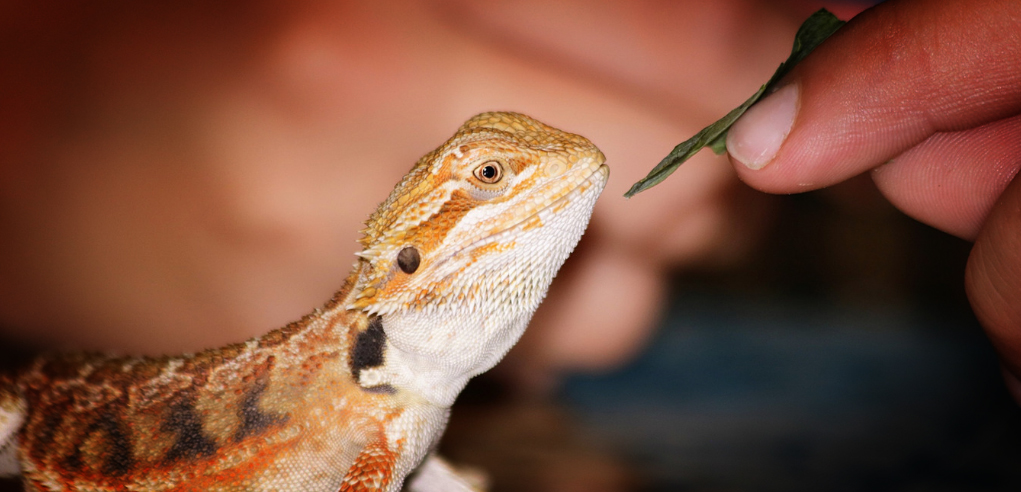 Live feeder insects such as crickets and dubia roaches should be its main protein source.
Live feeder insects such as crickets and dubia roaches should be its main protein source.
Pro-tip
Try making your own “baby food” by using a blender to mash your leafy greens and other vegetables. You can add a bit of apple for a more palatable taste (but not too much since these are also high in sugar). This way, you are sure of what goes into your bearded dragon’s food. Use this slurry to coax your dragon to eat instead of store-bought baby food.
You should invest in a good supplement (calcium, vitamin D3, and multivitamins) for your bearded dragon instead of turning to baby food as a source of nutrition or treats. These supplements can be offered as dustings on your bearded dragon’s food or as a gut load for live feeders (insects) before feeding.
Why We Don’t Recommend Baby Food For Bearded DragonsBaby food is often high in sugar and can have different additives and preservatives that can harm your bearded dragon even in small amounts.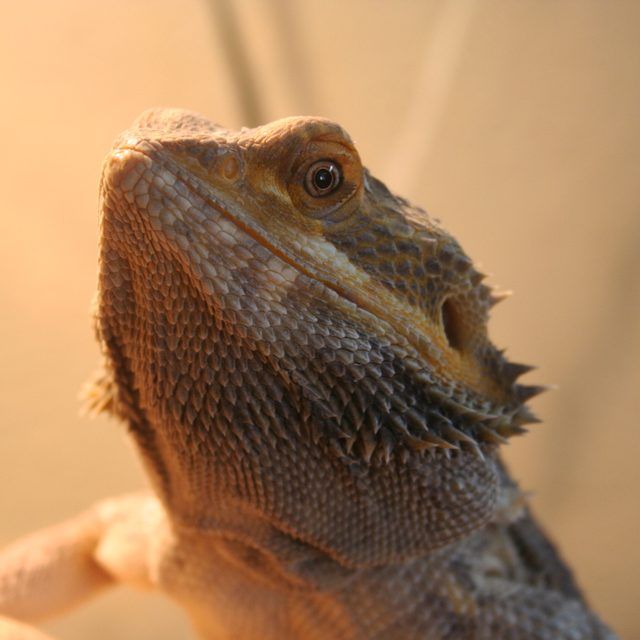 Though it is a quick, high caloric slurry that can sometimes be given to sick bearded dragons, it should never be part of its regular diet. It may lead to health problems such as obesity in the long run.
Though it is a quick, high caloric slurry that can sometimes be given to sick bearded dragons, it should never be part of its regular diet. It may lead to health problems such as obesity in the long run.
With any exotic animal in captivity, it’s better to mimic its natural diet as much as possible to give it a long and healthy life. Bearded dragons can actually eat a wide range of live feeder insects, leafy greens, fruits, and vegetables so you have a lot to choose from.
Baby food is actually quite expensive and will cost you more in the long run versus buying fresh greens, vegetables, and fruit. You can also make your own baby food by mashing up your dragon’s regular food if it has eating problems.
Which Types of Baby Food Are Ok?If you must feed your beardie baby food, go for the vegetables like squash or pumpkin. Choose the kinds that are based on the food that your bearded dragon would normally eat. Read the label carefully and check the sugar content. Opt for those marked organic or natural and free from preservatives.
Opt for those marked organic or natural and free from preservatives.
Stay away from those made from fruit since these usually have a higher sugar content. Don’t buy those with a lot of preservatives and additives as well.
Keep in mind that bearded dragons are lizards from dry, arid, climates that naturally live on insects and some plants. Baby food is not part of their natural diet. Only feed your dragon baby food if you have a reason to (e.g. you need to boost its diet in some way) or if your veterinarian recommends it.
Which Baby Foods Are Not Ok?Stay away from most baby foods especially ones made from fruit since these have a high sugar content. Don’t buy those with a lot of preservatives and additives as well.
Are Certain Brands Of Baby Food Better Than Others?If you cannot stay away from baby food for your bearded dragon, go for the organic and natural brands and stay away from the highly commercial ones that tend to have more preservatives and additives.
If you are resorting to baby food as a way to coax your dragon to eat more vegetables, then try these tips first if you have a picky eater.
- Be patient. Keep offering leafy greens and vegetables. Leave a plate with veggies in with your beardie for a while. Bearded dragons are more grazers in the wild so they may just nip a little bit from leafy greens from time to time throughout the day. Just make sure to take out uneaten food at the end of the day.
- If you have a juvenile bearded dragon, they may not take to eating greens immediately but will grow to like them as adults since they will need more of these in their diet as they mature. Be patient and persistent.
- Offer treats such as mealworms or superworms with your vegetables. Some owners hand feed worms or feeder insects to their dragons and then sneak in a small piece of greens to get their dragon used to the taste bit by bit.

- Make your own vegetable slurry or “baby food” by using a blender to mash your greens and vegetables with a bit of apple or fresh fruit thrown in to make it more palatable.
- Mix it up. Bearded dragons can eat a variety of greens, vegetables, fruits, and even flowers so try other variants to see what your dragon likes.
- If you notice a loss of appetite in your bearded dragon, check that it is getting the correct lighting and temperature levels in its enclosure as this can affect its metabolism and digestion. You may also want to provide calcium supplements such as well as vitamin D3, and a multivitamin for your bearded dragon.
- Providing good hydration via a water dish and their weekly bath will also help in your beardie’s digestion.
Read More >> Can Bearded Dragons Have Apples?
Greens, vegetables, and fruits you can feed your bearded dragon:- Acorn Squash
- Alfalfa Sprouts
- Apricots
- Apple
- Banana
- Butternut squash
- Bell peppers
- Bok Choy
- Broccoli (in moderation)
- Cabbage
- Carrots
- Celery
- Cilantro
- Corn
- Collard Greens
- Figs
- Grapes
- Green Beans
- Kale
- Kiwi
- Lettuce
- Mango
- Melon
- Mustard Greens
- Okra
- Papaya
- Parsnips
- Peaches
- Peas
- Pumpkin
- Raisins
- Raspberries
- Squash
- Sweet potato
- Strawberries
- Tomato
- Turnip Greens
- Watercress
- Zucchini
- Flowers (capeweed, rose petals)
- Crickets
- Dubia Roaches
- Earthworms
- Grasshoppers
- Mealworms
- Moths
- Slaters
- Slugs
- Snails
- Spiders
- Superworms
- Wax Worms
- Worms
- Pink mice and rats
- Low-fat meats
- Organ meat (chicken or ox heart and liver)
- Commercial Bearded Dragon/Iguana food
- Fireflies (Photinus sp.
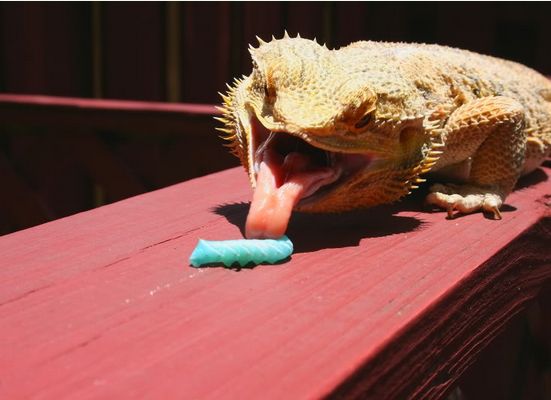 )
) - Monarch butterflies
- Queen butterflies
- Lygaeid bugs
- Nuts and seeds
- Spinach
- Avocado
- Citrus Fruits
- Other wild caught insects that can have pesticides or parasites
It’s not recommended that you feed bearded dragons baby food because of its high sugar content and possible addition of preservatives. If you really must, treat these as a once in a blue moon treat rather than a staple in their diets.
Can baby food be the main food source?No. Baby food will not give your dragon the full nutritional requirements it needs to grow healthy and happy and stay free from any illness.
Bearded dragons should have a well balanced diet and should be fed a variety of fresh, natural, and organically sourced greens, vegetables, and fruits as well as responsibly bred feeder insects free from parasites.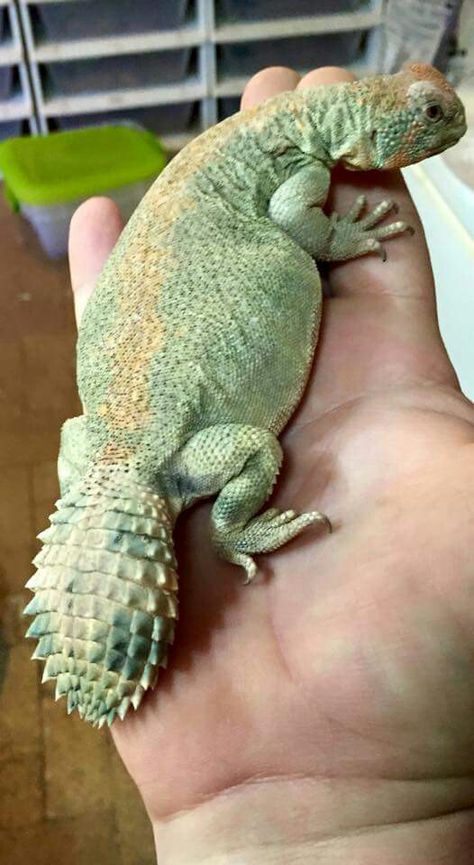
Juvenile bearded dragons will need more protein from feeder insects and some fiber from leafy greens and vegetables. As they mature into adult bearded dragons, they will need more leafy greens in their diet.
The high sugar content, additives, and preservatives that may be present in baby food can cause obesity, diabetes, malnutrition, and other illnesses to your dragon in the long run.
Can Bearded dragons eat chicken baby food?Yes but, baby food is not recommended for bearded dragons. On occasion, it may be offered as a quick and easy source of protein especially for sick bearded dragons that need to be slurry fed. The protein can help bearded dragons heal if they cannot get these from feeder insects. Always consult your veterinarian if your bearded dragon is sick.
Again, keep in mind that cooked meat normally found in baby food is nutritionally different from the protein source that a bearded dragon’s body is used to which are insects.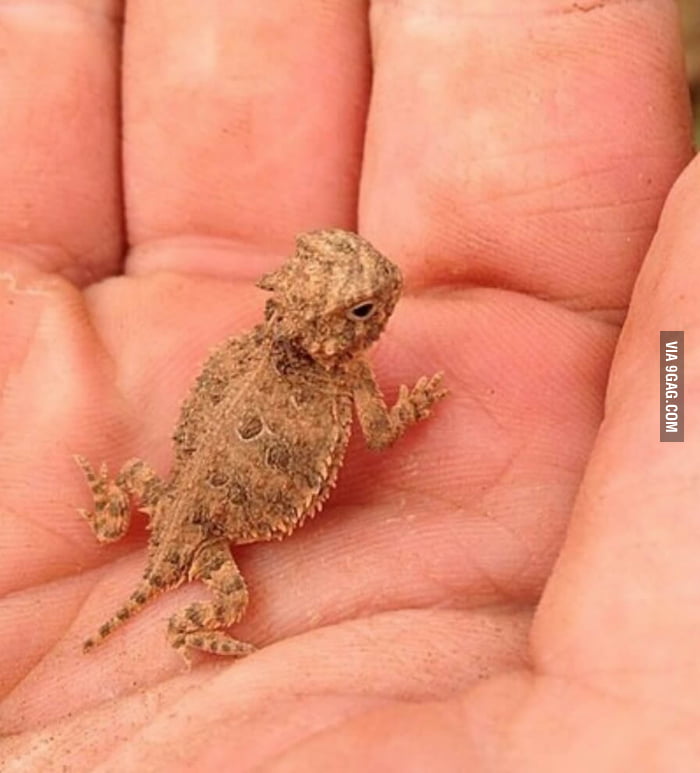 Live feeder insects would be the best protein source for your dragon.
Live feeder insects would be the best protein source for your dragon.
No, crickets and other live feeder insects are the best sources of protein and other vitamins and minerals for your pet. Baby food can sometimes be used as a quick slurry for sick bearded dragons or as a very rare treat but it shouldn’t become part of your dragon’s regular diet.
ConclusionThough bearded dragons can eat baby food, it is not recommended due to its high sugar content and poor nutritional value, not to mention being more expensive than whole, natural food. Provide your bearded dragon with the proper balanced diet of fresh greens and vegetables plus live feeder insects instead and it will be healthier for it. On some occasions, baby food can be a quick slurry for syringe feeding ailing bearded dragons. Baby food should never be a regular part of your bearded dragon’s diet.
Further ReadingOverview on Bearded Dragons:
Bearded dragon
Bearded dragons: facts and photos
Quick care sheet on bearded dragons (PDF):
Bearded dragon husbandry
Very detailed husbandry manual for bearded dragons (PDF):
Husbandry Guidelines for Bearded Dragons
Comprehensive list of plants that reptiles can eat:
Edible Plants List
An article tackling some feeding myths found online:
Fact Vs. Fiction on food for herbivorous reptiles
Fiction on food for herbivorous reptiles
A good list of vegetable and fruit names for omnivores:
Vegetable and Fruit Names: A Multi-Lingual Glossary for Herbivorous and Omnivorous Reptile Keepers
Can I Feed My Bearded Dragon Baby Food?
Bearded dragons, unlike many human children, love their veggies. They will eat a wide variety of vegetables and fruits when given the opportunity. Providing your bearded friend with an array of appropriate vegetables can sometimes get a bit exhausting, so some beardie parents may wonder about alternatives.
Can I feed my bearded dragon baby food? No, you should not feed your bearded dragon baby food. Baby food might be an appropriate alternative if your bearded dragon is sick or malnourished. If you believe this to be the case, always consult your veterinarian, and stick to fresh vegetables otherwise.
While giving your bearded dragon baby food may seem like a quick, convenient way to work fruits and vegetables into his diet, it is not the healthiest option.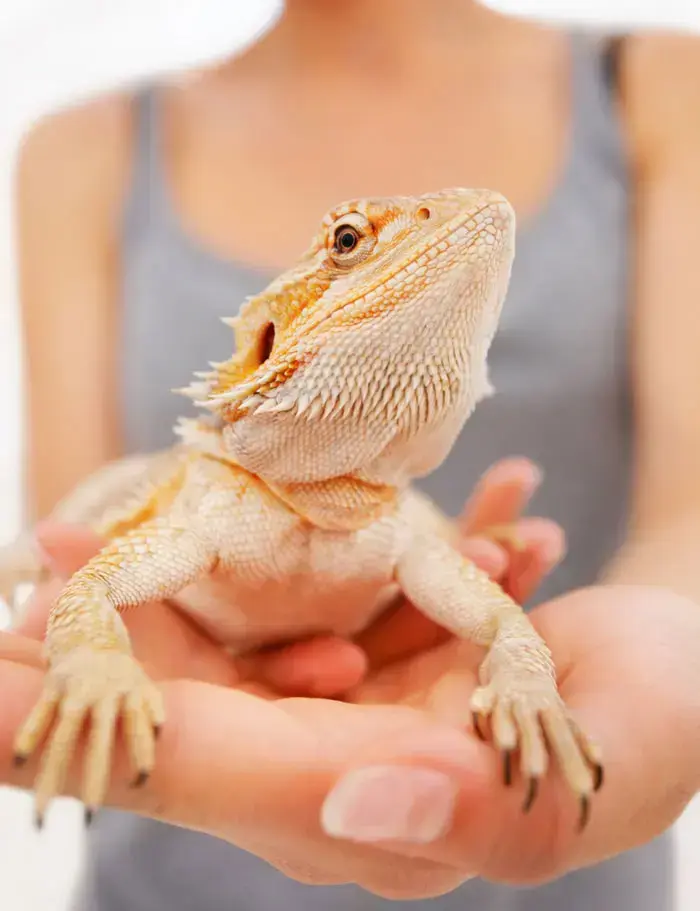 Bearded dragons need whole, fresh vegetables, particularly leafy greens, to receive the full range of nutritional benefits necessary for good health.
Bearded dragons need whole, fresh vegetables, particularly leafy greens, to receive the full range of nutritional benefits necessary for good health.
Why isn’t Baby Food Good for Bearded Dragons?
Many baby foods on the market today are high in sugar. In fact, the World Health Organization states that a majority of baby foods they studied derived 30 percent of their calories from sugars.1 This isn’t ideal for a human baby, much less a bearded dragon of any age.
Bearded dragons do not require sugar in their diet for any nutritional reason. In the wild, a bearded dragon’s diet consists of mostly insects, as well as grasses, flowers, and leaves. You should always attempt to maintain a captive diet that is as close to a wild dragon’s diet as possible.
Bearded dragons need several vitamins and minerals to stay healthy. First, they need calcium. Ensuring that your bearded dragon gets the necessary amount of calcium in their diet is crucial, especially when they are babies and their skeletal systems are developing.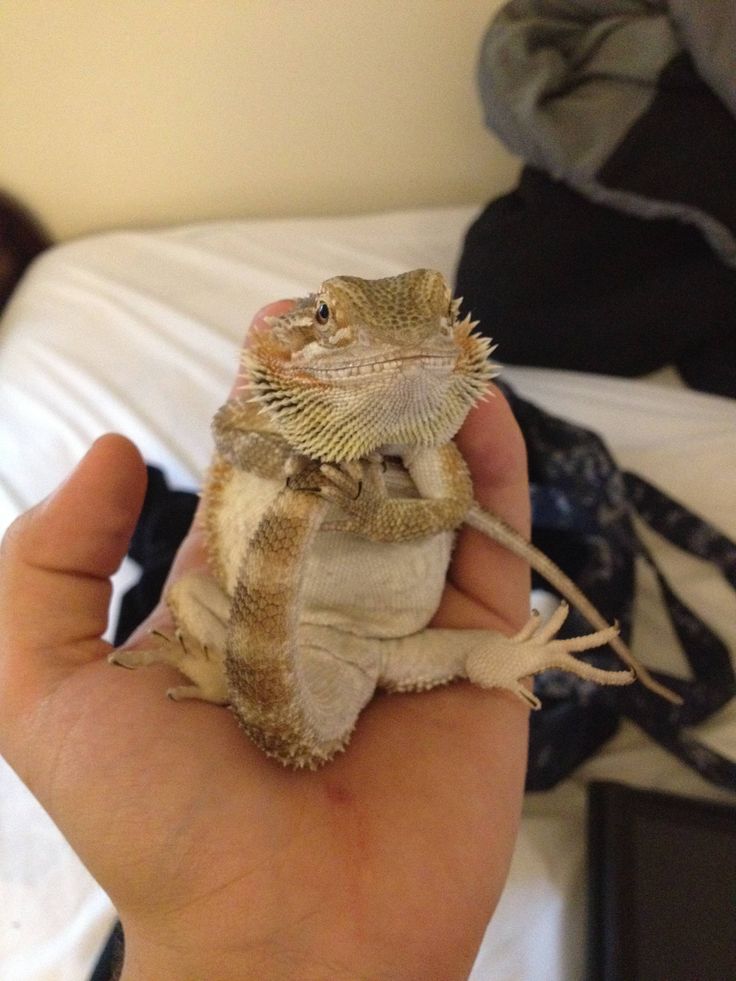
Bearded dragons also require vitamin A and iron, which they receive mostly from fresh vegetables. Processed baby foods are simply not as nutrient-rich and will fall short of providing the full amount of essential nutrients that your beardie requires.
In addition, giving your bearded dragon baby food is not necessarily the most financially beneficial option. Though it might seem a lot more convenient, since you don’t have to cut up and potentially cook the food yourself (in the case of butternut squash, for example), you’ll be paying a lot more for baby food than you will for fresh produce.
Let’s look at one example. The average butternut squash weighs 2-3 pounds (that’s 32-48 ounces) and costs about $1.29.
One jar of organic butternut squash baby food contains a mere 4 ounces of food and costs $1.19! I personally hate math, so I’m going to bore you with as little of it as possible, but this means that the baby food is a whopping 29 cents per ounce and the whole, fresh butternut squash ranges from 4-2 cents per ounce, depending on the size of the squash. It simply doesn’t make good financial sense to go with the baby food.
It simply doesn’t make good financial sense to go with the baby food.
What Should I Be Feeding My Bearded Dragon Instead of Baby Food?
Baby food isn’t a great option for your beardie. You’ve got that. So what should you be feeding him instead?
First of all, he should be eating protein in the form of live insects. Younger bearded dragons need to consume a larger ratio of insects than their adult counterparts. Insects should make up approximately 80% of your baby bearded dragon’s diet, with fresh vegetables making up the other 20%2.
Once your bearded dragon reaches adulthood, most veterinarians recommend a diet that is closer to 50% insects and 50% plant-based foods3.
Live insects given to your beardie can include gut-loaded crickets and dubia roaches, superworms, hornworms, and silkworms. You can also give your beardie waxworms and mealworms as treats, but not too often since they are much higher in fat and are not as easily digestible.
As previously mentioned, beardies need calcium in their diet.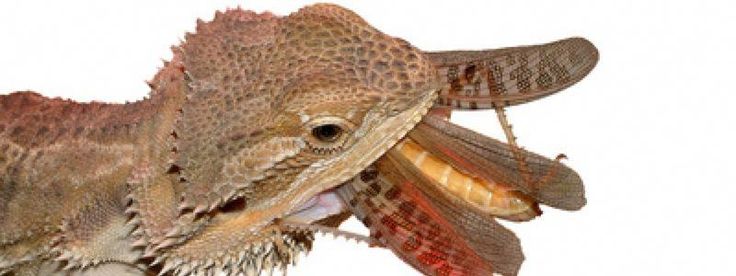 Some of this calcium will come from fresh vegetables. Brussels sprouts, butternut squash, bok choy, carrots, collard greens, kale, and turnip greens are all excellent sources of calcium and are safe for bearded dragons.
Some of this calcium will come from fresh vegetables. Brussels sprouts, butternut squash, bok choy, carrots, collard greens, kale, and turnip greens are all excellent sources of calcium and are safe for bearded dragons.
In addition to these calcium-rich veggies, you also need to provide your beardie with a calcium supplement. More on that later.
You also need to make sure your bearded dragon is receiving adequate amounts of vitamin A and iron. Collard greens, carrots, and sweet potatoes are all high in vitamin A. Collard greens are also high in iron and, luckily for you, can be given to your bearded dragon every day. Lentils, kale, and pumpkin are also high in iron and can be served occasionally.
In addition to the vegetables mentioned above, the following fresh veggies are all highly recommended for bearded dragons4: Acorn squash, bell peppers, endive, mustard greens, spaghetti squash, yellow squash, and dandelion greens.
VCA Animal Hospitals recommend that “Most (80-90%) of the plant material [given to your dragon] should be vegetables and flowers, and only 10-20% should be fruits. ”3
”3
Fruit, given in the form of occasional treats, can include apples, apricots, mangos, blueberries, strawberries, watermelon, peaches, pineapple, and grapes. You can also give your dragon certain flowers and plants such as Clover, Basil, Geraniums, and Impatiens.
Fruits and vegetables should always be chopped into appropriately sized pieces (no larger than the space between your bearded dragons eyes).
What Should I Avoid Giving My Bearded Dragon?
In addition to avoiding baby food, there are also certain insects, fresh fruits and vegetables, and other plants that you should never serve to your beardie.
Glowworms, fireflies, and any other insect that “glows” should never be fed to a bearded dragon. The chemical responsible for bioluminescence in these insects can be lethal to your reptilian friend.
In this same vein, never feed your bearded dragon any insect that you catch outdoors. Wild insects can be a source of pesticides and other harmful substances. They can pose a serious threat to the health of your dragon and should never be offered as a meal. Only give your dragon insects that you have obtained from a reputable feeder insect seller.
They can pose a serious threat to the health of your dragon and should never be offered as a meal. Only give your dragon insects that you have obtained from a reputable feeder insect seller.
Certain vegetables are considered nutrient-poor and are best avoided in a beardie’s diet, including iceberg lettuce and celery.
Avoid giving your bearded dragon cabbage, chard, and too much kale. These veggies are high in calcium oxalates and can cause metabolic bone disease and calcium deficiency. You should also avoid large amounts of spinach, broccoli, and parsley in your beardie’s diet. These vegetables contain high levels of goitrogens, which can negatively impact your dragon’s thyroid function.
Besides vegetables that are simply too low in valuable nutrients, or too high in substances that can harm your beardie, there is also a long list of plants that are downright toxic to your bearded dragon.
These plants include, but are not limited to: Avocados, Amaryllis, Azalea, Boxwood, Buttercup, Calla Lily, Clematis, Crocus, Wild Daffodils, Elderberry, Holly, Hydrangea, Iris, Ivy, Marijunana, Morning Glory, Oak, Peony, Poison Ivy, Poison Oak, Poinsettia, Red Maple, Sweet Pea, and Tulip.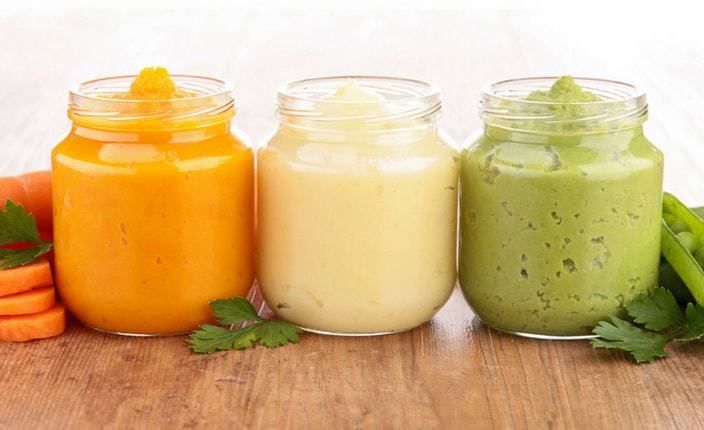
More Bearded Dragon Nutrition Tips
In addition to providing your bearded dragon with the right forms of protein and plant-based snacks, you should always provide him with a shallow dish of fresh water. Bearded dragons can obtain some hydration from the vegetables and fruits you give them, but also require constant access to a clean water source. You should wash and refill your dragon’s water bowl daily.
Another great way to promote hydration in your dragon is via a warm bath 2-3 times per week. Many beardies are more inclined to sip the bathwater surrounding them than they are to drink from their water bowl.
Provide your dragon with his own little bathtub (a plastic storage container is the perfect way to go) in case he defecates in the bath, which dragons are likely to do. A beardie’s bathwater should be 1-3 inches deep (no higher than his shoulder joints) and should be approximately 90-96 degrees Fahrenheit.
Your bearded dragon will also need the right dietary supplements. According to VCA Animal Hospital, veterinarians usually recommend that, 2-3 times per week, you lightly sprinkle your bearded dragon’s food with a calcium powder that does not contain vitamin D3, and an additional 2-3 times per week, you lightly sprinkle their food with a separate calcium powder that does contain vitamin D3.
According to VCA Animal Hospital, veterinarians usually recommend that, 2-3 times per week, you lightly sprinkle your bearded dragon’s food with a calcium powder that does not contain vitamin D3, and an additional 2-3 times per week, you lightly sprinkle their food with a separate calcium powder that does contain vitamin D3.
Once a week you should also lightly sprinkle their food with a reptile mineral supplement. These types of powders stick best when sprinkled onto moist fruits or vegetables. The sprinkled portion of your dragon’s salad should be served to him at the beginning of the meal to ensure that he consumes it all.
Be sure to talk to your veterinarian about the proper supplementation for your bearded dragon, as these needs can also change with age.
Conclusion
Even though human baby food might seem convenient for certain reasons, it is not the best option when it comes to feeding your bearded dragon. If you want to ensure that your bearded buddy stays properly nourished, feed him a wide variety of live insects, fresh, nutrient-rich vegetables, and the occasional fruit treat. He’ll thank you for it in the end.
He’ll thank you for it in the end.
Sources:
- https://www.healthline.com/health-news/how-you-can-tell-if-your-childs-baby-food-has-too-much-sugar
- https://vcahospitals.com/know-your-pet/bearded-dragons-feeding
- http://www.thebeardeddragon.org/bearded-dragon-nutrition-data.php
- https://www.birdexoticsvet.com/bearded-dragon-vet
Is it possible to feed a bearded dragon with baby food? Given the opportunity, they will eat a wide variety of vegetables and fruits. But there is not always access to fresh vegetables or fruits, then the owners of bearded dragons ask what can be replaced with fresh vegetables and fruits?
Can I feed baby food to my bearded dragon Can I feed baby food to my bearded dragon? No, you shouldn't feed baby food (mashed potatoes) to your bearded dragon. Baby food may be a suitable alternative if the bearded dragon is sick or malnourished. If you think this is the case, always check with your veterinarian, otherwise stick to fresh vegetables.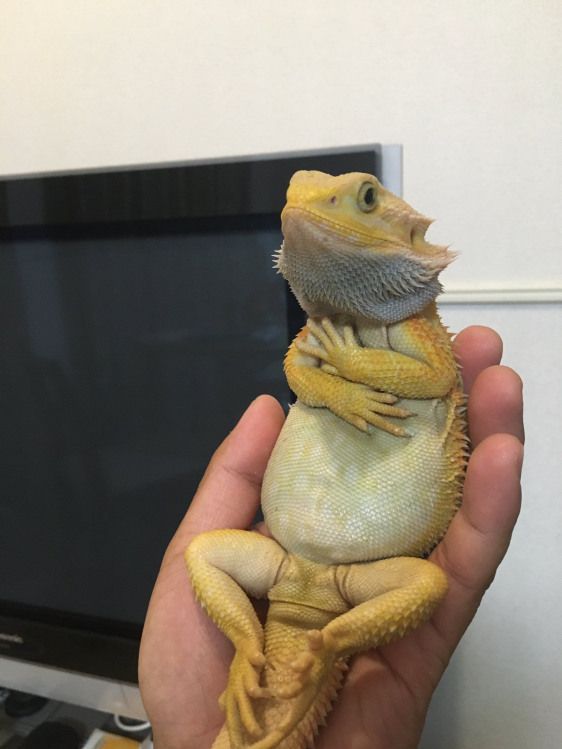
While feeding your dragon may seem like a quick and convenient way to include fruits and vegetables in your diet, it's not the healthiest option. Bearded dragons need whole, fresh vegetables, especially leafy greens, to get the full spectrum of nutrients they need for good health.
Why is baby food not suitable for bearded dragons?
Many baby foods on the market today are high in sugar. In fact, the World Health Organization states that most of the baby foods they have studied get 30 percent of their calories from sugars. This is bad for our children, especially for baradate dragons.
Bearded dragons do not need sugar in their diet. In the wild, their diet consists primarily of insects, along with herbs, flowers, and leaves. You should always try to keep a diet as close as possible to that of the wild bearded dragon.
Bearded dragons need several vitamins and minerals to stay healthy. First, they need calcium. Ensuring that your bearded dragon gets the right amount of dietary calcium is critical, especially when they are still small and their skeletal system is developing.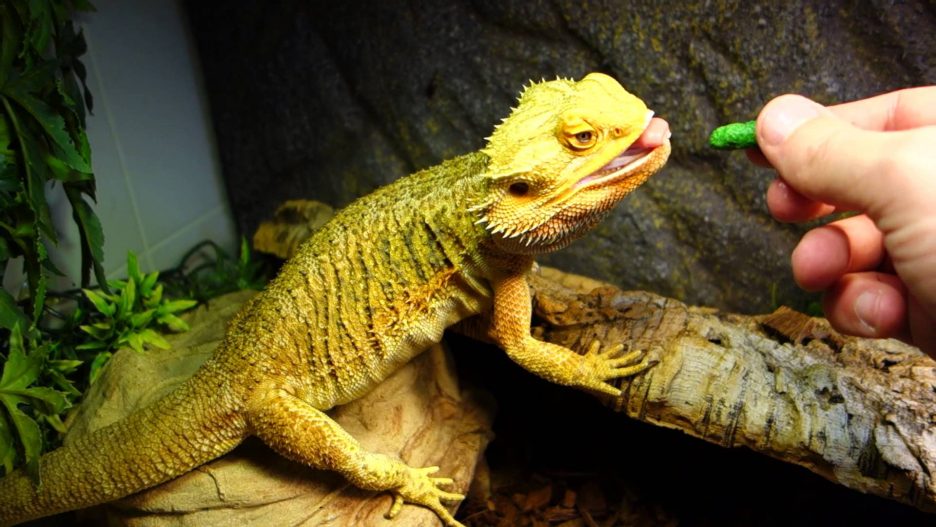
Bearded dragons also need vitamin A and iron, which they get mainly from fresh vegetables. Processed baby food is simply not as nutrient dense and will not provide the full amount of essential nutrients your dragon needs.
In addition, feeding baby food to dragons is not always the best financial option. While this may seem like a lot more convenient since you don't have to cut and potentially cook the food yourself (like butternut squash), you'll be paying a lot more for baby food than buying fresh fruits and vegetables.
How to feed a bearded dragon instead of baby food?
Baby food is not the best option for your dragon. So what is the best way to feed a bearded dragon?
First of all, the bearded dragon must eat protein in the form of live insects. Young bearded dragons must consume more insects than their adult counterparts. Insects should make up about 80% of your baby bearded dragon's diet, with the other 20% fresh vegetables.
When your bearded dragon becomes an adult, most veterinarians will recommend a diet that is 50% insects and 50% plant foods.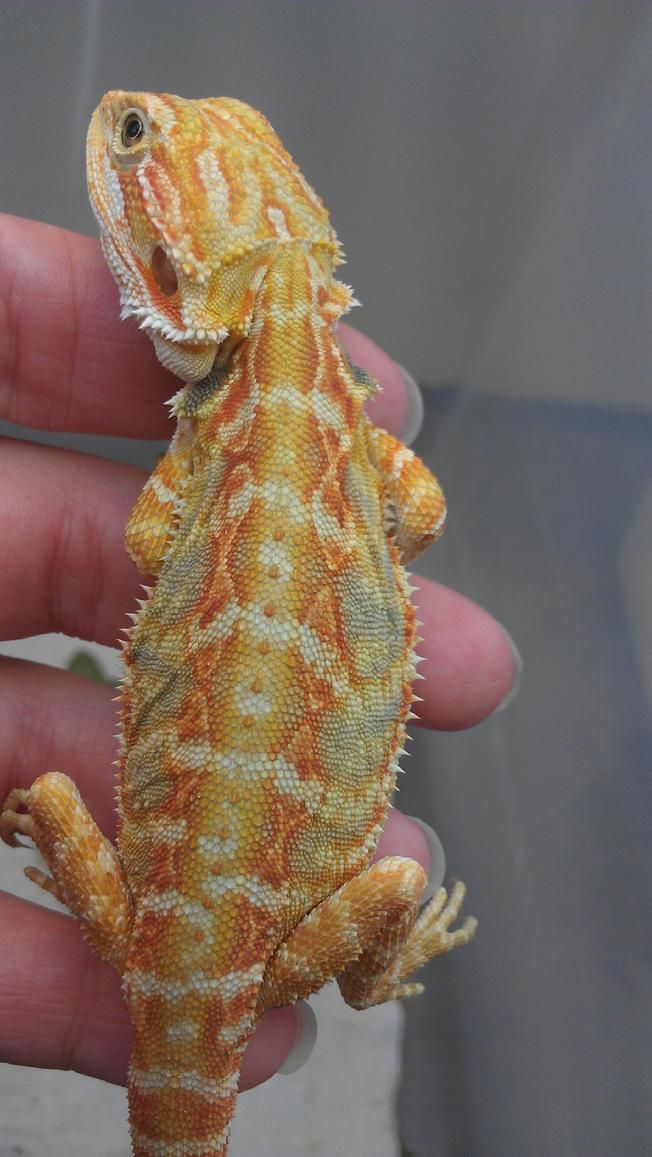
Live insects that can be given to the bearded dragon: crickets, dubia cockroaches, horned worms and silkworms. You can also give your dragons waxworms and mealworms as treats, but not too often as they are much fatter and not as easy to digest.
As mentioned earlier, dragons need calcium in their diet. Some of this calcium comes from fresh vegetables. Brussels sprouts, butternut squash, carrots, collards, cabbage, and turnip greens are excellent sources of calcium and are safe for bearded dragons.
In addition to these calcium-rich vegetables, you should also give calcium supplements. More on this later.
You also need to make sure that the bearded dragon gets enough vitamin A and iron. Kale, carrots, and sweet potatoes are rich in vitamin A. Green cabbage is also rich in iron, and luckily for you, it can be given to a bearded dragon every day. Lentils, cabbage and pumpkin are also rich in iron and can be served from time to time.
In addition to the vegetables mentioned above, the following fresh vegetables are highly recommended for bearded dragons: zucchini, bell peppers, mustard greens and dandelion greens.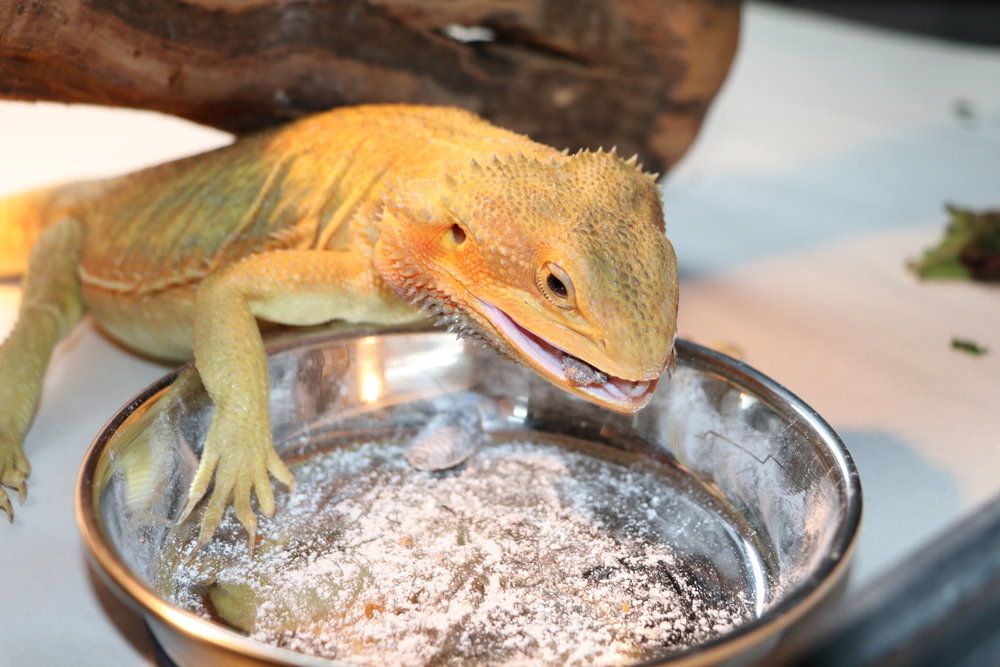
VCA Animal Hospitals recommends that "the majority (80-90%) of the plant-based diet should be vegetables and flowers, with only 10-20% fruit."
Fruits occasionally eaten as a treat may include apples, apricots, mangoes, blueberries, strawberries, watermelon, peaches, pineapples and grapes.
Fruits and vegetables should always be cut into pieces of the appropriate size (no larger than the space between the eyes of a agama).
What should not be fed to the bearded dragon?
In addition to avoiding baby food, there are also certain insects, fresh fruits and vegetables, and other plants that you should never give your bearded dragon.
Fireflies and any other insects that "glow" should never be given to dragons. The chemical responsible for bioluminescence in these insects can be lethal to your reptile friend.
Never feed insects that you catch outdoors to your bearded dragon. Wild insects can be a source of pesticides and other harmful substances.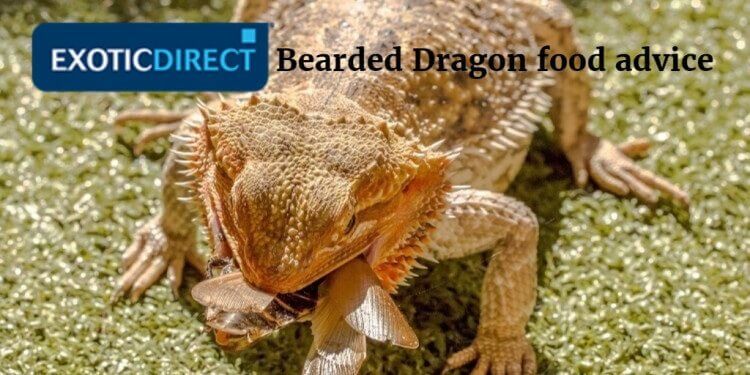 They can pose a serious threat to the health of the dragon and should never be offered as food. Only give your dragons insects that you have purchased from a reputable insect dealer.
They can pose a serious threat to the health of the dragon and should never be offered as food. Only give your dragons insects that you have purchased from a reputable insect dealer.
Some vegetables, including iceberg lettuce and celery, are considered nutrient poor and are best avoided in the dragon's diet.
Don't give your bearded dragon too much cabbage. These vegetables are rich in calcium oxalate and can cause metabolic bone disease and calcium deficiency. You should also avoid high amounts of spinach, broccoli, and parsley in your bearded dragon's diet. These vegetables contain high levels of goitrogens, which can negatively affect thyroid function.
In addition to vegetables that are simply too low in valuable nutrients or too high in substances that could harm your dragon, there is a long list of plants that are downright toxic to your dragon.
Feeding tips for bearded dragons.
In addition to giving your bearded dragon the right protein and plant foods, you should always provide fresh water. Bearded dragons can get some hydration from the vegetables and fruits you give them, but they also need constant access to a source of clean water. You must wash and fill the water bowl daily.
Bearded dragons can get some hydration from the vegetables and fruits you give them, but they also need constant access to a source of clean water. You must wash and fill the water bowl daily.
The bearded dragon also needs the right nutritional supplements. According to VCA Animal Hospital, veterinarians generally recommend lightly dusting calcium powder 2-3 times a week, not containing vitamin D3, but lightly sprinkle their food 2-3 times a week with a separate calcium powder that contains vitamin D3.
Once a week, you should also lightly sprinkle their food with a reptile mineral supplement. These types of powders stick best to wet fruits or vegetables. A sprinkled portion of lettuce should be given to the agama at the beginning of the meal so that it can eat it all.
Be sure to talk to your veterinarian about suitable supplements for your bearded dragon, as these needs may also change with age.
Other related entries:
Is it possible to keep a gecko with a bearded dragon?
Can bearded dragons live without crickets?
Keeping a bearded dragon at home
Against the background of the fact that many well-known representatives of the animal world cause allergic reactions in humans, it is possible to get a small and, above all, safe lizard as a pet.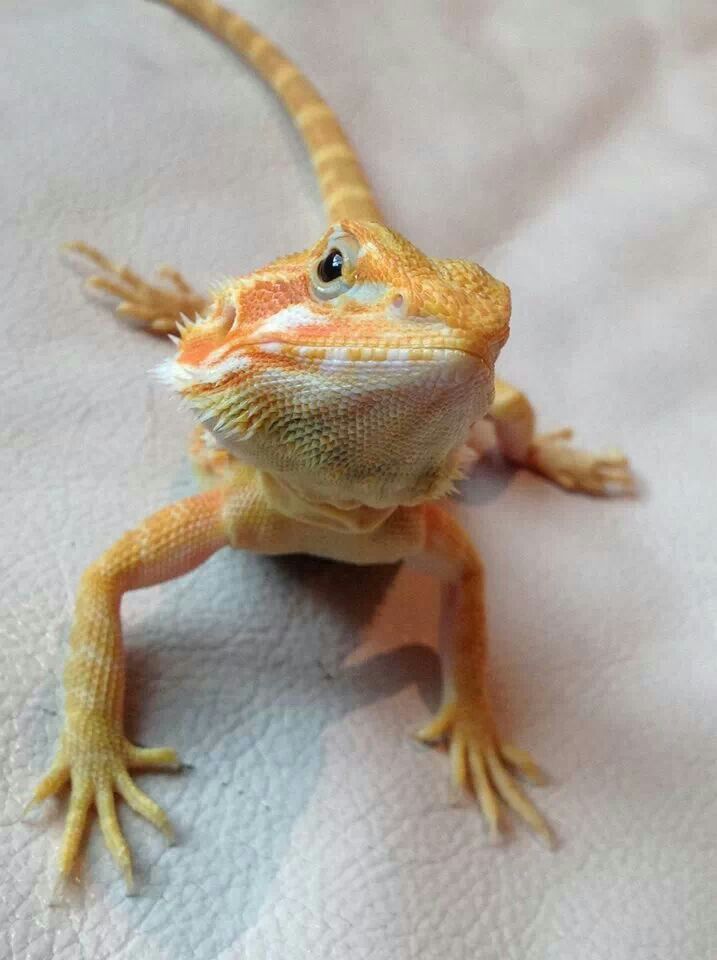 The object of my research is a lizard - a bearded agama aged 10 months.
The object of my research is a lizard - a bearded agama aged 10 months.
The results obtained are used by me on an ongoing basis when keeping a bearded dragon in a terrarium , and also formulated practical recommendations for beginner naturalists. It has been established that the agama adapts well to new home conditions, accepts food from hands, and therefore is a pet.
I conducted a survey among the students in my class. From the analysis of the survey results, the following conclusions can be drawn that not all the children surveyed knew about the bearded dragon, probably due to its exoticism, while the majority decided that the lizard can be kept at home . Half of the respondents are ready to have a bearded dragon as a pet. The results of the survey once again confirm the relevance of my research, since information about the lizard is of interest to children.
My pet is named "Fiona". She is brown. The color can change and depends on the ambient temperature and the mood of the animal. When the agama is sleeping, the skin color is lighter, and when not sleeping, it is darker. When the animal is afraid or cold, it becomes light yellow. Triangular head. The color of the head is light brown, the nose is yellowish, reddish at the ear cavities, the mouth is white. Large mouth, round protruding eyes.
She is brown. The color can change and depends on the ambient temperature and the mood of the animal. When the agama is sleeping, the skin color is lighter, and when not sleeping, it is darker. When the animal is afraid or cold, it becomes light yellow. Triangular head. The color of the head is light brown, the nose is yellowish, reddish at the ear cavities, the mouth is white. Large mouth, round protruding eyes.
Large auditory openings on the sides. The body is regular, rounded, flat. There is an interesting pattern on the back, sides and head, which adds exotic to the lizard. The pattern is roundness, streaks, irregularly shaped rhombuses, some of which are dark brown, and some are highlighted with white dots.
There are white spines along the edges of the body and head, which increases the size of the animal. Appearance resembles a small dragon. The length of the lizard with the tail is 22 cm, the tail is longer than the body.
In order to accommodate the agama, I purchased a terrarium in a specialized store with the following overall dimensions: length 60 cm, width 40 cm, height 35 cm. This volume is enough for a young animal. There are holes in the top and side parts that promote free air circulation.
This volume is enough for a young animal. There are holes in the top and side parts that promote free air circulation.
Sliding doors in the central part. I regulate the number of light hours with a socket with a mechanical timer and a mirror incandescent lamp with a power of 75 W. For good growth and the production of vitamin D, I installed an ultraviolet lamp. In order for the agama to climb, he placed willow and birch branches, after removing the bark from them and drying them well.
The branches are located under the lamps for heating and in the shady zone, also placed leaves, artificial things, stones, which brought the conditions of the lizard's placement closer to wildlife. Under the branches there are places to sleep and rest. The temperature is 28C and not higher than 30C, there is a thermometer and a hygrometer for control. In winter, he moved the terrarium to the home radiator, there are containers for water and food. Place a green rug on the floor of the terrarium.
I feed the lizard mealworms and lettuce, cucumbers, bananas, apples, grapes. In the summer, he fed grasshoppers, after tearing off their legs so that the agama would not be injured. He noted that with a special appetite she eats insects and worms, that is, protein food. Pieces of plant food should not be large so that the agama does not choke.
She eats vegetable food with less desire, so lettuce leaves grow in a nutrient medium directly in the terrarium, which makes it possible for the animal to constantly eat fresh green leaves. I taught the agama to take food from my hand. I spent 14 days doing this work. The lizard recognizes the owner and waits for the morning feeding at the appointed place.
Agama Fiona catches worms and grasshoppers, but she is not active 24 hours a day.
Observation of the lizard shows the following results:
- Young dragon grows very fast, increasing the amount of animal food consumed. Plant food is rather difficult to eat, preferring cucumbers.
 The food must not injure the animal and must consist of 80% insects and 20% plant foods. Insects must be alive. I feed daily in the morning.
The food must not injure the animal and must consist of 80% insects and 20% plant foods. Insects must be alive. I feed daily in the morning. - Created places under the branches where she hides and rests in the shade.
- Turning on the lighting in the terrarium in the morning is a signal for the lizard to approach the feeder.
- The lizard often moves objects around the terrarium.
- When the temperature drops, it behaves sluggishly and not actively, peeling of the skin is observed.
- Gets used to and recognizes the owner, takes food from the hand.
- The health of an animal depends on the quality of nutrition and ambient temperature.
- It is necessary to constantly monitor the temperature in the terrarium, take measures to heat the air, use ultraviolet light, especially in the absence of sunlight in winter and cloudy weather.
Terminals
- Confirmed the hypothesis that the bearded dragon can be considered a domestic animal.





